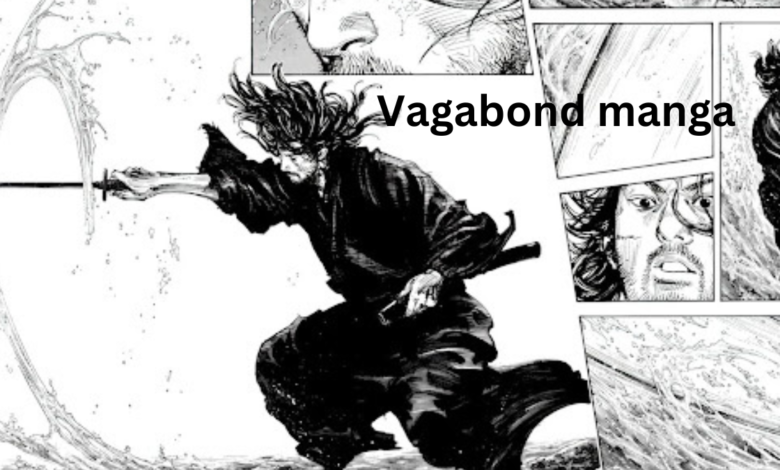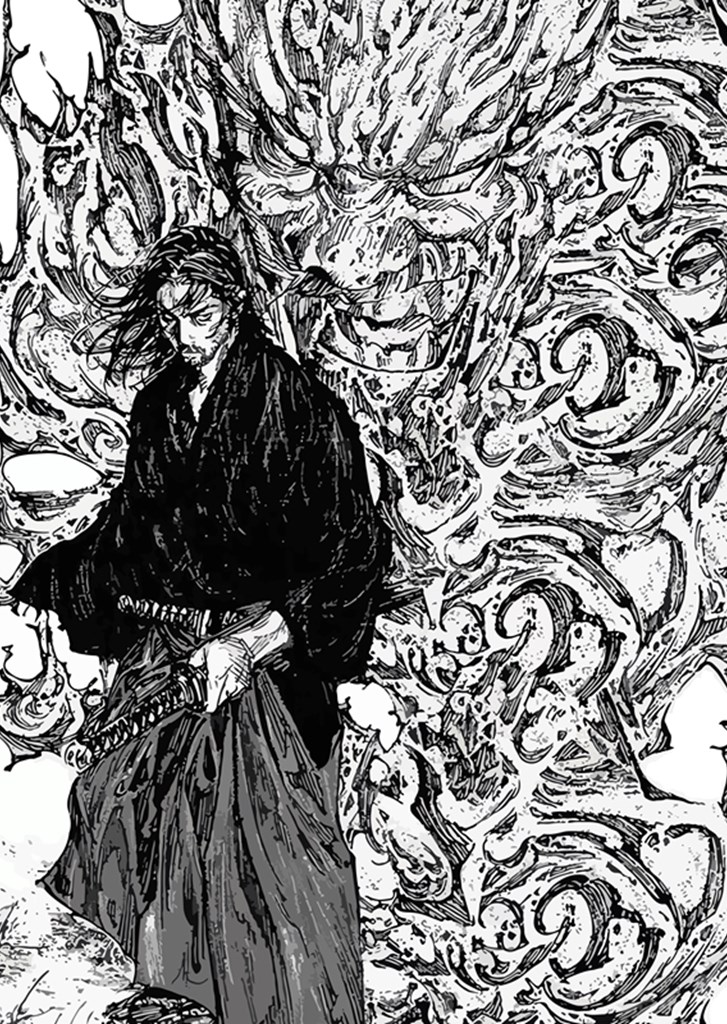Vagabond Manga: A Timeless Masterpiece of Samurai Art and Philosophy

Vagabond manga has always been a medium that transcends mere storytelling, merging art with narrative to create something deeply immersive. In the vast landscape of manga, certain works stand out as timeless classics, and “Vagabond” is one of them. Written and illustrated by Takehiko Inoue, the creator of the famous basketball manga “Slam Dunk,” Vagabond takes a very different route. Set in the world of samurai and feudal Japan, the manga delves deep into the life of Miyamoto Musashi, one of Japan’s most legendary swordsmen.
This article explores the intricacies of Vagabond manga, its artistic brilliance, philosophical depth, and why it has become a beloved title among manga enthusiasts and casual readers alike. Whether you are new to the series or a long-time fan, there’s always something profound to discover in this breathtaking work.
The Storyline of Vagabond: A Journey of Self-Discovery

Vagabond manga is based on Eiji Yoshikawa’s novel “Musashi,” which narrates the life of Miyamoto Musashi, a real historical figure known for his unparalleled swordsmanship. In Vagabond, however, Inoue doesn’t just retell a historical tale; he offers a richly layered story about personal growth, ambition, and the eternal search for meaning in life.
The Early Life of Takezo
The story begins with a young, wild Takezo Shinmen, who later becomes Miyamoto Musashi. Born into a time of war, Takezo is a restless soul filled with anger and violence. He initially seeks power and strength to prove himself, yearning to become the strongest warrior in the land. His journey begins when he survives a bloody battle at Sekigahara, a historic conflict that shaped the fate of Japan. While the ambition to be the best swordsman drives him, it’s clear that Takezo is haunted by something deeper — his struggle to find purpose and understand his place in the world.
The transition from Takezo to Musashi
As the series progresses, Takezo adopts the name Musashi after a spiritual and philosophical transformation. This transition is not just about changing his name but is symbolic of a deeper evolution. Musashi begins to realize that true strength is not just physical prowess but also mental and emotional resilience. His internal conflict between violence and peace, ambition and humility, power and wisdom forms the core of Vagabond’s storytelling.
Throughout the series, readers are treated to a layered narrative where Musashi faces opponents not just with swords but with ideals and philosophies. His journey from a reckless youth to an introspective and wise swordsman is one of the most compelling aspects of the manga.
Art and Aesthetics: A Visual Masterpiece
If there’s one thing that distinguishes Vagabond manga from other samurai or historical manga, it’s the art. Takehiko Inoue’s illustrations are nothing short of breathtaking. From the detailed character designs to the sprawling landscapes, every page feels like a painting. The use of shading, intricate line work, and realistic anatomy is a testament to Inoue’s skills as an artist.
Realism and Precision
Inoue’s dedication to realism is evident in the way he draws sword fights, human expressions, and even simple gestures like walking or resting. The precision with which Inoue captures the movement of Musashi’s sword during battles creates a dynamic flow that immerses the reader. His portrayal of Musashi’s opponents also stands out, with each character having a distinct fighting style that reflects their personality and philosophy.
The Use of Nature and Surroundings
Nature plays a significant role in Vagabond. The landscapes are not just backdrops but are symbolic of Musashi’s internal struggles. Mountains, rivers, forests — these elements are used metaphorically to represent the challenges Musashi faces both externally and internally. There are many moments in the manga where Musashi contemplates life while surrounded by nature, showcasing Inoue’s ability to blend art and narrative seamlessly.
Character Design and Evolution
Inoue’s character designs are grounded in reality, avoiding the exaggerated, flamboyant styles often found in other manga. As Musashi ages and evolves, his appearance reflects these changes. The once fiery and reckless youth gradually becomes more composed, and this transformation is visible in his demeanor and expression. The physical scars Musashi acquires throughout the series also serve as visual markers of his growth and the battles he has survived.
Philosophical Themes: More Than Just a Samurai Tale
At its core, Vagabond manga is much more than a samurai action manga. The series delves deep into philosophical themes that resonate with readers on a profound level. Inoue uses Musashi’s journey as a lens to explore existential questions about life, death, identity, and the meaning of true strength.
The Concept of Strength
One of the central themes of Vagabond manga is the concept of strength. Initially, Musashi equates strength with power, violence, and the ability to defeat opponents. However, as the story unfolds, he begins to understand that true strength lies in self-control, wisdom, and the ability to make peace with oneself. This theme is exemplified in Musashi’s encounters with various swordsmen, each of whom has a different understanding of what it means to be strong.
The Pursuit of Enlightenment
Another significant theme in Vagabond manga is the pursuit of enlightenment. Musashi’s journey is not just about becoming the greatest swordsman; it’s about attaining a higher state of being. Throughout the series, he struggles with questions about his purpose, the nature of life, and the path to inner peace. His encounters with monks, scholars, and fellow warriors provide him with different perspectives on what it means to live a fulfilling life.
Musashi’s quest for enlightenment parallels the Zen philosophy, which is heavily integrated into the narrative. Zen teaches that enlightenment comes not from external achievements but from internal realization. This philosophy resonates with Musashi’s journey, as he gradually shifts from seeking external validation to finding inner peace.
Life and Death
The theme of life and death is omnipresent in Vagabond manga. As a swordsman, Musashi is constantly faced with the reality of death — both his own and those of his opponents. The manga doesn’t shy away from showing the brutality of battle, but it also delves into the emotional and psychological toll it takes on Musashi. He begins to question the value of taking life and the consequences of his actions, leading to moments of deep introspection.
The Historical Context: Feudal Japan and Samurai Culture
To fully appreciate Vagabond manga, it’s essential to understand the historical context in which the story takes place. The manga is set during Japan’s Edo period, a time when the country was undergoing significant social, political, and cultural changes. The era of the samurai was coming to an end, and warriors like Musashi were part of a dying breed.
The Role of the Samurai
The samurai were a warrior class in feudal Japan who followed a strict code of conduct known as Bushido. This code emphasized loyalty, honor, and discipline, values that are evident in the characters of Vagabond. Musashi’s struggle to define his moral code is a central theme in the manga, and his journey reflects the broader questions that many samurai faced during this time.
The Decline of the Samurai Era
As Japan moved towards peace and stability, the role of the samurai began to diminish. Vagabond manga captures this historical shift, showing how warriors like Musashi had to adapt to a world where martial prowess was no longer as highly valued. This transition is mirrored in Musashi’s internal journey, as he moves away from seeking glory on the battlefield and towards a more introspective path.
Historical Accuracy vs. Fiction
While Vagabond manga is based on real historical events and figures, Inoue takes creative liberties with the story. The manga is not a strict retelling of history but rather a fictionalized account that explores deeper philosophical and emotional themes. Inoue’s portrayal of Musashi is a blend of historical facts and creative interpretation, allowing for a richer and more nuanced narrative.
Vagabond’s Influence on Manga and Popular Culture
Vagabond has had a profound impact on the world of manga and has influenced countless other works in the genre. Its unique blend of action, philosophy, and art has set a new standard for storytelling in manga, and it continues to be a source of inspiration for both creators and readers.
Influence on Other Manga
Many manga artists have cited Vagabond manga as an influence on their work, particularly in the seinen (adult) genre. The series’ mature themes, complex characters, and realistic art style have made it a benchmark for quality in the industry. Vagabond’s success has also opened the door for more historical and philosophical manga to find mainstream popularity.
Adaptations and Media Presence
Although Vagabond manga has not been adapted into an anime, its influence can be seen in other media. The manga has been adapted into stage plays and has inspired various forms of fan art, cosplay, and even video games. Musashi himself is a recurring figure in Japanese pop culture, and Vagabond’s portrayal of him has become one of the most iconic.
A Lasting Legacy
Despite being on hiatus since 2015, Vagabond remains one of the most celebrated manga series of all time. Its lasting legacy is a testament to Inoue’s skill as a storyteller and artist. The manga has won numerous awards, including the prestigious Kodansha Manga Award and the Tezuka Osamu Cultural Prize, cementing its place in manga history.





